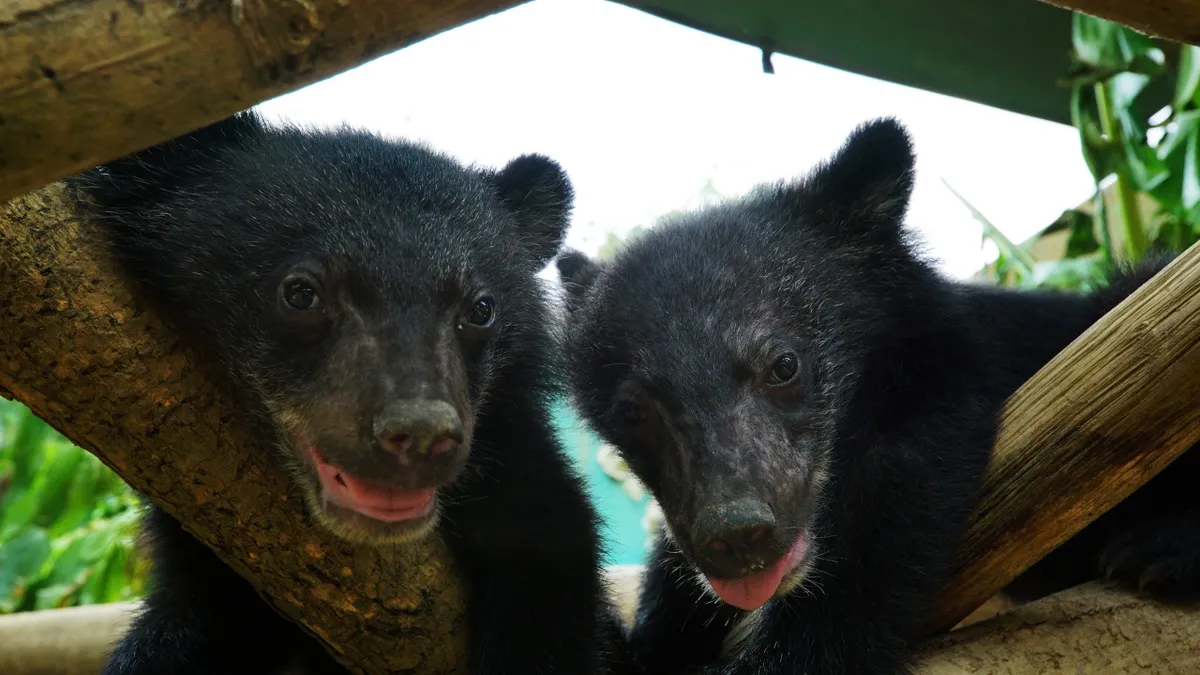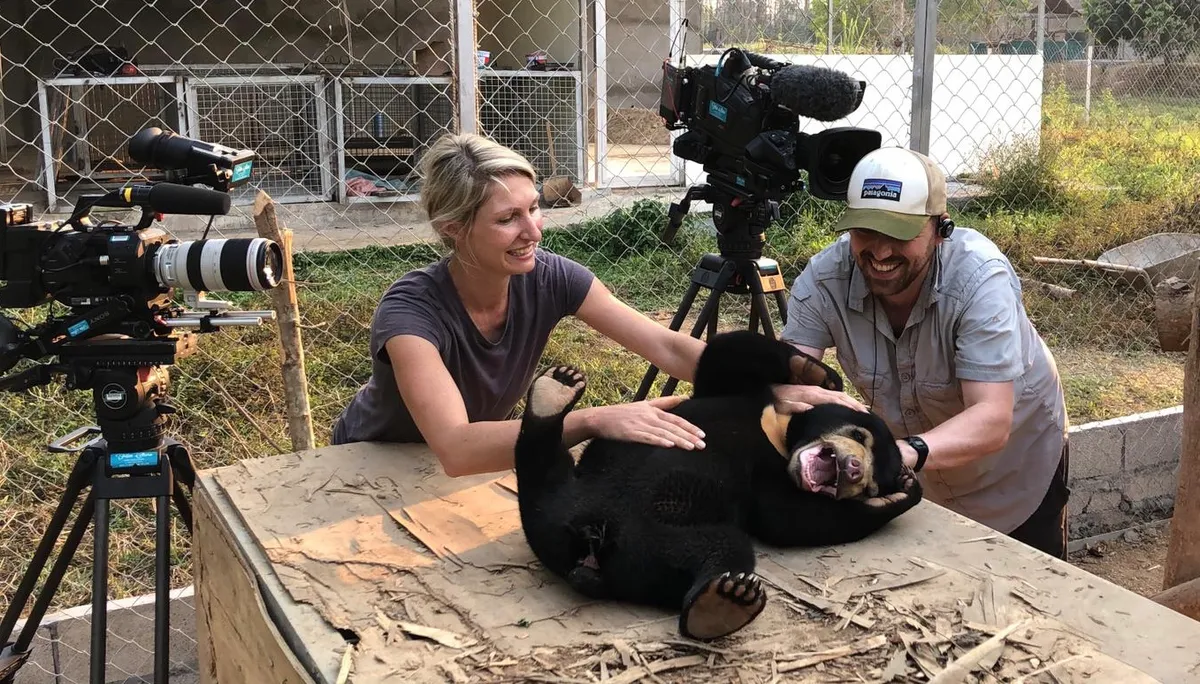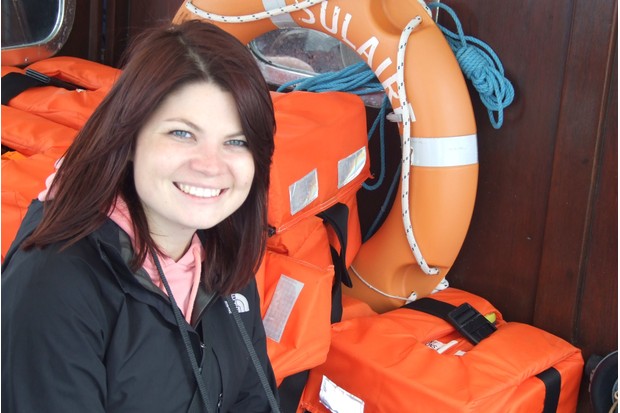In a two-part documentary for BBC Two, Giles Clark travels to Laos in Asia, where sun and moon bears are under threat due to illegal bear bile farming. A pioneering wildlife rescue centre is being built by charity Free the Bears and Giles has arrived to help.
As well as caring for orphaned cubs at home, he is rescuing bears from all over the country and building wild enclosures so liberated bears can live a natural life once more. Giles also releases other rescued animals back to the wild. Bears about the House follows the stories of several sun and moon bears on their road to recovery.
Producer Cherique Pohl talks about the challenges of filming bear rescues in Laos for new BBC Two series Bears about the House.
When is Bears about the House on TV?
Bears about the House airs at 8pm on 15 and 22 July on BBC Two.
What was the most challenging footage to film for Bears about the House?
The very nature of what we set out to film during 2019 meant that it had the potential to be challenging, especially for someone who refuses to watch The Lion King again as the sadness is too raw since watching it as a child. Series producer Tom Jarvis and I were invited to film on the front line of wildlife conservation in Laos with a team who spend every waking hour rescuing bears from the illegal wildlife trade and caring for them at a wildlife sanctuary in Luang Prabang.
Collecting rescued bear cubs is unexpected, exciting and exhausting. Sometimes the Free the Bears team drives for over 14 hours at short notice to get to the cubs. If bears are rescued by the Laos forestry department, they are kept at the forestry office until the charity collects them. The cubs are usually malnourished and fragile and very little is known about them: the team have to respond as quickly as possible.
After very little sleep, travelling on treacherous roads and surviving on a diet of Pringles and mango strips, we arrived to pick up two tiny moon bear cubs. It was in many ways thrilling and we were very focused on filming and covering the scene properly, but there is a moment when you see the cubs for the first time up close and you are struck by the fact that this is not about you, the chaos around you or the series, it is about the terrified cubs who are now a few weeks/months old in a broken crate without their mother. It is at that moment you realise they have lost everything they need as wild bears.

From here the chaos commences, paperwork is signed and the cubs are loaded into the vehicle. After another 14 hour journey, they arrive at the sanctuary. At this stage, round the clock care is critical. Throughout this process we film their care and rehabilitation. Often very scared and/or aggressive, after a few days you can see that they are starting to realise that they are safe. The cubs slowly find their spirits and make it to happy adult bears at the sanctuary.
Across the months observing and filming these cubs, my overriding emotions were sadness and then anger and a burning desire to help. These cubs are adorable and beautiful and what a privilege to be allowed into their world – a privilege few on this planet have as they are some of the most elusive bear species. I can’t help but always be aware that they should not be in a sanctuary, they should be in the wild with their mum and they are not because of the illegal wildlife trade.

What was the funniest sequence to film during Bears about the House?
The one thing you learn when you spend time with Mary is how inquisitive and intelligent sun bears are as a species. Mary constantly needed stimulation and enrichment and as a six-month-old has found her confidence too. Anything is entertainment for her – a tree, a tripod or your leg: once she sets eyes on you, you are the next toy.
Mary spent a few weeks in a temporary enclosure at the sanctuary and after a few weeks, she outgrew the space and needed a lot more stimulation. It was time for her first walk outside her enclosure in a safe zone. They say, “Never film with children or animals, well now I know why.”
The bear set off and so did the crew with many kgs of camera and tripod equipment. Through long grass, running left to right and up and down every tree she could find. The “Tasmanian Devil” ran like the wind, circling, twisting, turning and every time she fancied playing with someone’s leg or the camera equipment, nothing stopped her.
In 40°C heat the crew were tested to their limits. Luckily technical advisor Giles Clark was there to bring some sort of focus every now and then, but she loved it. When you finish filming these exhausting and hilarious scenes, you leave delighted for Mary. I was glad we could be part of her enrichment!
What was your favourite moment during filming of Bears about the House?
When three-year-old moon bear brothers Tong and Nunge, who we’ve been filming since their rescue and through their rehabilitation, set foot outside their huge enclosure for the first time: they felt grass under their feet and got the opportunity to run and climb trees. To see them get a second chance and enjoy it so much was wonderful to witness.
What was a success during filming Bears about the House?
The relationship between the crew and Free the Bears was key for such an intense and long filming period. Series Producer Tom Jarvis and I take these relationships very seriously. We work with respect and sensitivity, towards the same goal and have fun doing so!
What didn’t go so well?
Being organised. The very nature of filming an observational documentary is unpredictable, but even more so when you work in the world of wildlife rescue; with people with limited English and try to arrange things from the opposite side of the world with a small budget. But it always works out in the end. Oh…sleeping definitely did not go so well either, but who needs that when you can help bears?
Main image: Mary the sun bear very happy on Matt Hunt’s lap. © Cherique Pohl/BBC
